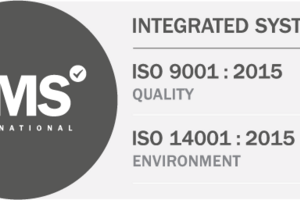18 February 2015
Why the retail industry doesn’t trust finance schemes – but should!
The new 25-in-5 initiative launched by the British Retail Consortium has highlighted the problem of “mistrust” when it comes to investments in energy efficiency in retail. The initiative – designed to cut carbon emissions by 25% in the sector by 2020 – points to scepticism over finance schemes as one of the reasons there has been so little take-up of energy-efficient upgrades by retail organisations.
A suite of ‘complex and inaccessible’ energy policies has been pegged as the underlying reason for the hesitancy surrounding investment however the problems don’t stop there. Competing budget allowances, finance schemes which sound too good to be true and companies preferring to self-finance are just a few of the issues we’ve seen when working with clients in the retail sector.
Any retail organisation which has made it through the trials of the recent economic crisis more or less intact will only have one goal in mind – sales. Energy-efficient upgrades often come second to shop refits and other measures which will improve the positioning of products.
Shifting the focus
Here at Greenlite, we’ve have deliberately shifted the focus when introducing the idea of lighting finance schemes to customers. We think it is all about tuning in to what the customer needs to achieve – and what kind of ‘reasons / drivers’ there are for the upgrade to modern, efficient lighting. In the retail sector, this is nearly always increased sales rather than energy savings. In other sectors it might be reduced maintenance (particularly in industrial and warehousing applications). In other industries, it’s all about energy efficiency or hitting board-driven CO2 reduction targets.
Too good to be true?
We find that clients can be wary of finance schemes which sound ‘too good to be true’. The truth of the matter is, many of these schemes really are as good as they look – and the benefits to the customer are very significant. For example, our own Greenlite Lighting Finance Scheme allows clients to pay for the cost of their upgrade through monthly payments which are outweighed by the savings made on energy bills. There is no risk and no upfront capital outlay, and no catch! It’s as simple as that.
Lighting finance schemes like the one offered by Greenlite really do provide a very easy, no risk route for organisations to reduce bills and improve their working environments through better lighting. Think about customer priorities
In conclusion, at Greenlite we think that organisations such the BRC are right to focus on cutting through the confusion surrounding the energy policy landscape.
Those companies who offer finance for lighting (or other energy efficiency upgrades) need to think about - and tune into - the priorities of the organisation they are selling these ‘packages’ to. Without an industry-wide re-think of this approach, take-up of finance schemes will continue to be slow and wariness will persist. This will of course result in wasted opportunities to improve sales, improve working environments for building users and of course reduce energy and CO2 consumption


